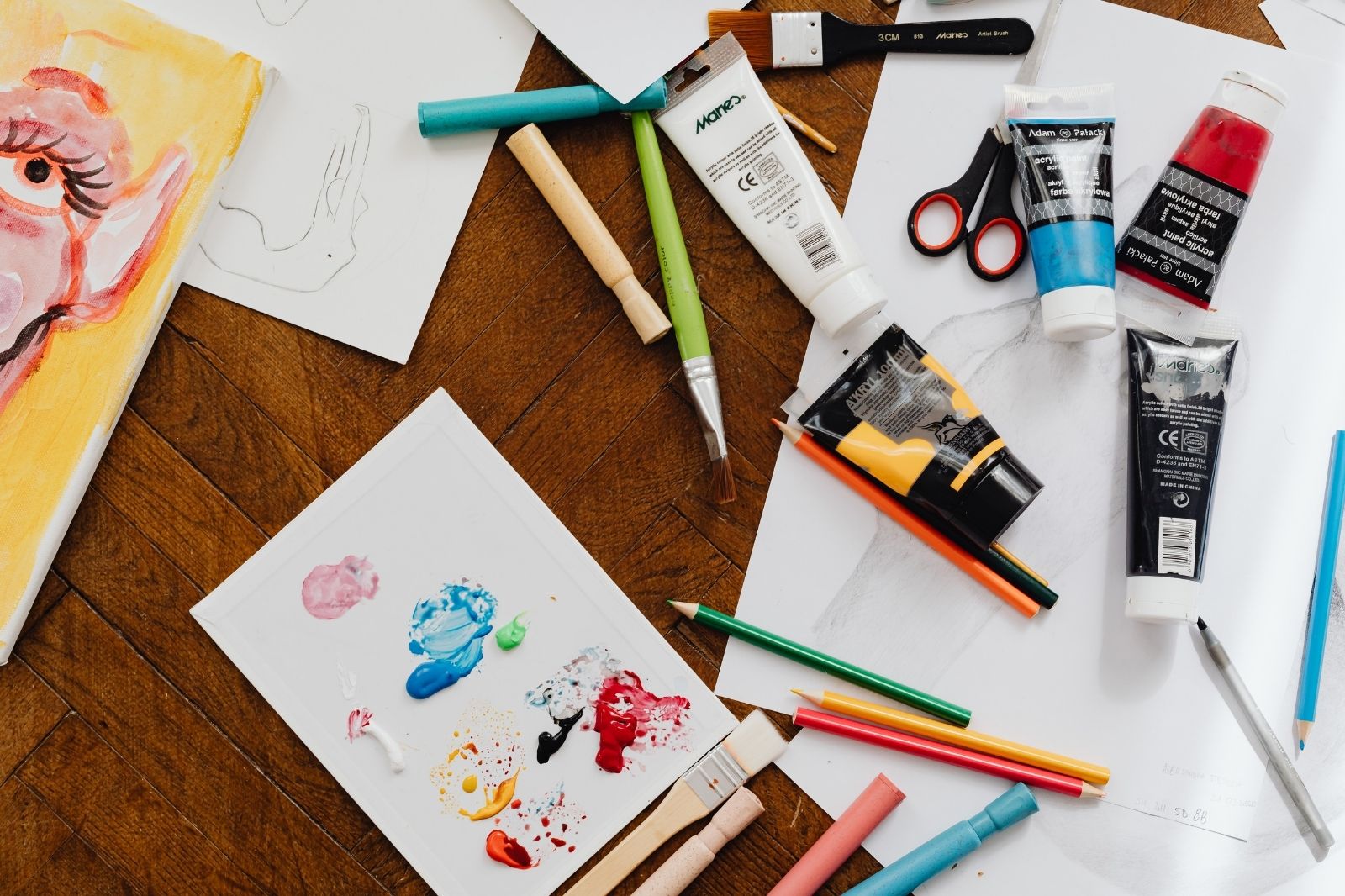Different Types of Art Paper

Choosing the right type of art paper is essential for any artist. There’s a lot of factors to consider– whether it be a specific texture, thickness, or color– when choosing a quality paper to work on. The type you use can significantly affect the final appearance of your artwork. This guide will cover different types of art papers and their unique qualities to help you make informed choices for your next project.
Drawing Paper
Drawing paper is the most basic type of paper in sketchbooks and is often the go-to for many artists. It is designed to withstand erasing and layering without tearing easily. Drawing paper typically has a smooth to medium texture and is lighter in weight compared to more specialized papers.
- Weight and Thickness: Drawing paper usually ranges from 50 to 100 lb (approximately 70 to 160 gsm). The higher the weight, the thicker and more durable the paper.
- Texture: It can be smooth, medium, or rough, with smoother paper better for detailed sketches and rougher textures suitable for expressive strokes and blending.
- Recommended For: Pencil, charcoal, graphite, colored pencils, and pastels.
Watercolor Paper
Watercolor paper is specially designed to handle the use of water-based media without warping, buckling, or tearing. It has a more durable and absorbent surface that can withstand multiple washes and heavy applications of water and paint. Watercolor paper comes in different weights and textures, which can dramatically impact how the paint interacts with the surface.
- Weight and Thickness: The most common weights are 140 lb (300 gsm) and 300 lb (640 gsm). The higher the weight, the less likely it is to buckle when wet.
- Texture: Watercolor paper typically comes in three main textures: hot-pressed (HP), cold-pressed (CP or NOT), and rough. HP paper has a smooth surface that’s ideal for detailed work. CP has a slightly textured surface and is great for general use. Rough paper has a pronounced texture perfect for expressive work and interesting paint effects.
- Recommended For: Watercolor paints, gouache, and ink washes.
Mixed-Media Paper
As the name suggests, mixed-media paper is versatile and can handle a variety of media. This type of paper is thicker and more durable than standard drawing paper.
- Weight and Thickness: Generally, mixed-media paper weighs between 90 and 140 lb (190 to 300 gsm).
- Texture: It typically has a medium texture that balances between smooth and rough, allowing for different techniques and media applications.
- Recommended For: Drawing, watercolor, acrylics, ink, gel crayons, and pastels.
Pastel Paper
Pastel paper is specifically designed to hold onto soft pastels and chalks. It has a textured surface that provides the necessary “tooth” for pastels to grip, which prevents smudging and allows for smooth blending.
- Weight and Thickness: This paper usually has a heavier weight of around 90 to 150 lb (190 to 300 gsm) to support the pressure of pastel application.
- Texture: The surface can be rough, with options such as sanded paper that creates a more pronounced texture and grip.
- Recommended For: Soft pastels, oil pastels, and chalks.
Acrylic Paper
Designed for use with acrylic paints, acrylic paper has a unique texture and absorbency that make it ideal for thick and expressive acrylic work. It’s treated to resist warping and to handle multiple layers of paint.
- Weight and Thickness: Acrylic paper is typically heavier than drawing paper and is usually around 140 lb (300 gsm) or higher.
- Texture: It often has a canvas-like texture that provides a great surface for acrylic paint application.
- Recommended For: Acrylic paint, gouache, and mixed-media works that include acrylic as a primary medium.
Bristol Paper
Bristol paper is a smooth, heavyweight paper that comes in two main types: vellum and plate. Vellum Bristol has a slightly textured surface, while plate Bristol is ultra-smooth. This type of paper is great for detailed work and is widely used in technical drawing and illustration.
- Weight and Thickness: Typically around 100 lb to 300 lb (160 to 640 gsm).
- Texture: Smooth or slightly textured.
- Recommended For: Ink, alcohol-based markers, pencil, and detailed illustrations.
Charcoal Paper
Charcoal paper has a strong texture that helps hold the powdery, smudgy medium of charcoal without smearing too much. It is specially designed to support heavy applications and blending techniques.
- Weight and Thickness: Usually weighs between 60 and 100 lb (90 to 160 gsm).
- Texture: It often has a rough or slightly textured surface.
- Recommended For: Charcoal, chalk, and pastel work.
Final Thoughts
When choosing art paper, consider the medium you’ll be using, the type of texture you prefer, and how much weight you need for your project. Experiment with different papers. Whether you’re drawing detailed pencil sketches or creating layered watercolor landscapes, understanding the unique characteristics of various papers can help you achieve your artistic vision. Visit your local art store and try out a few sheets to discover which paper best complements your personal style and technique.
Trusted Insights from Artists
At Art Life Today, our passion for arts and crafts is at the heart of everything we do. We understand that the right tools and materials can make all the difference in your creative projects, so we take our responsibility as reviewers seriously. Our goal is to help you discover the best products that will inspire your creativity and bring your artistic visions to life.